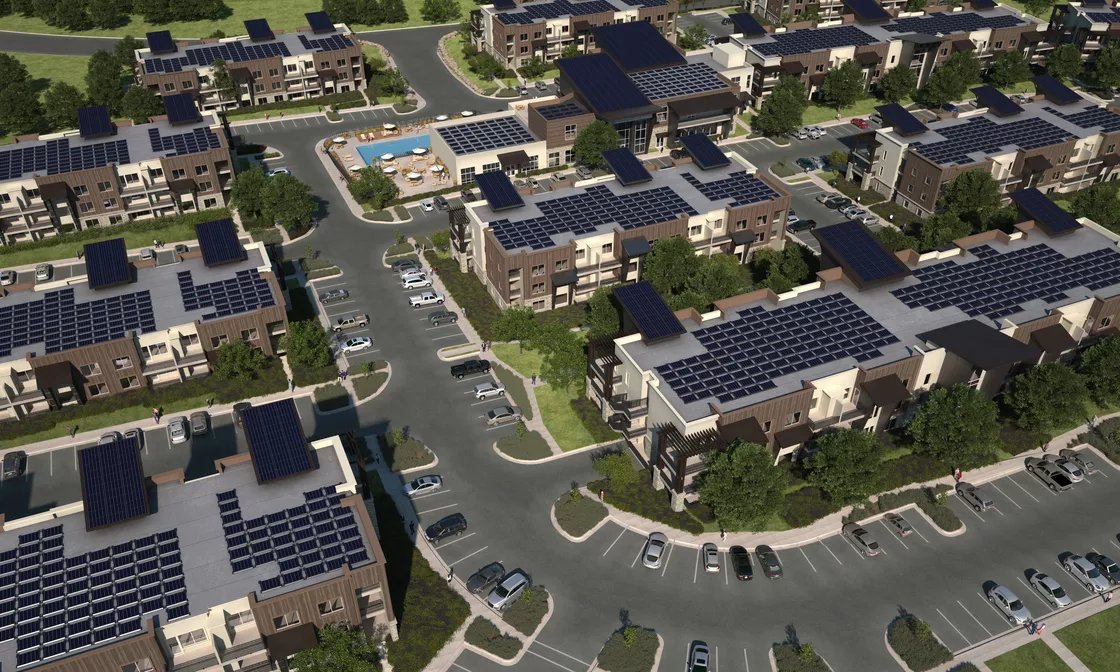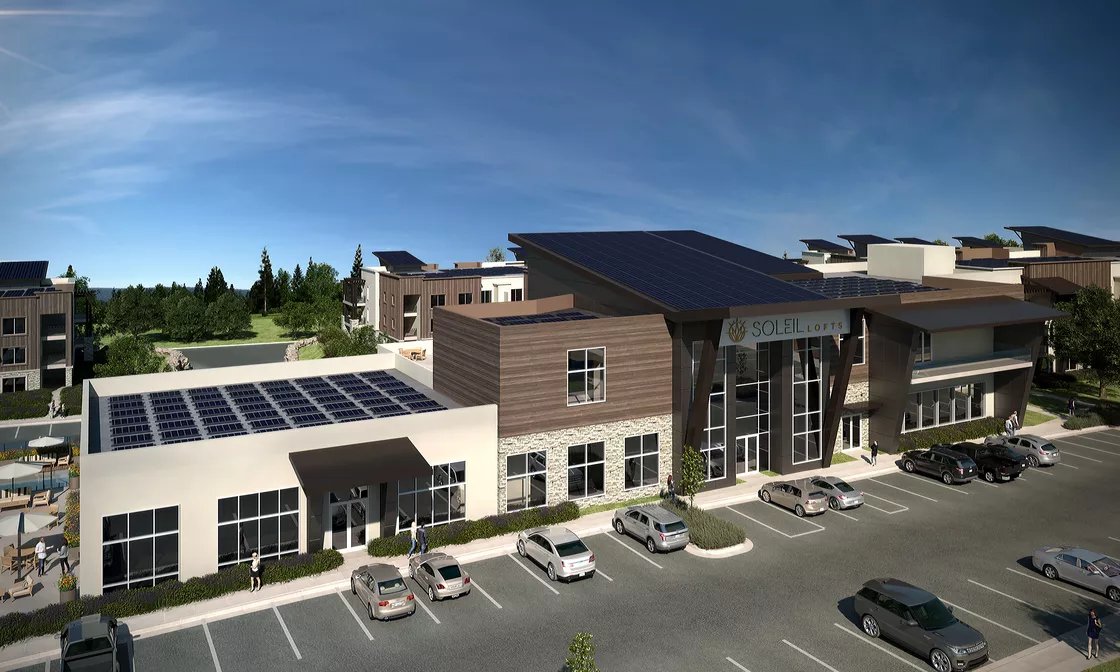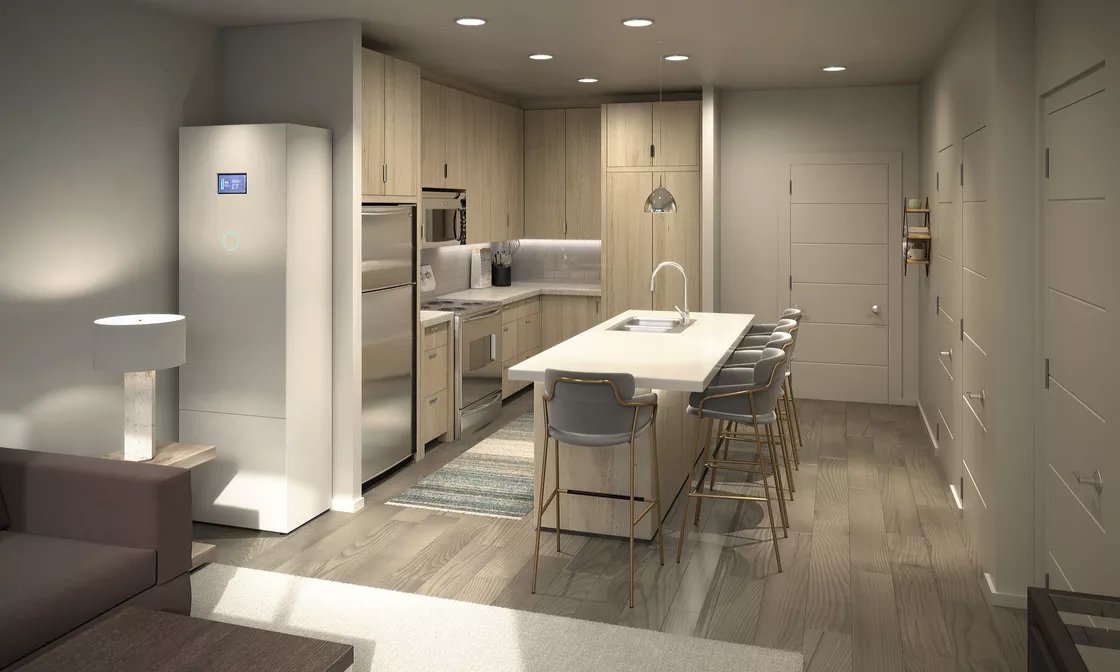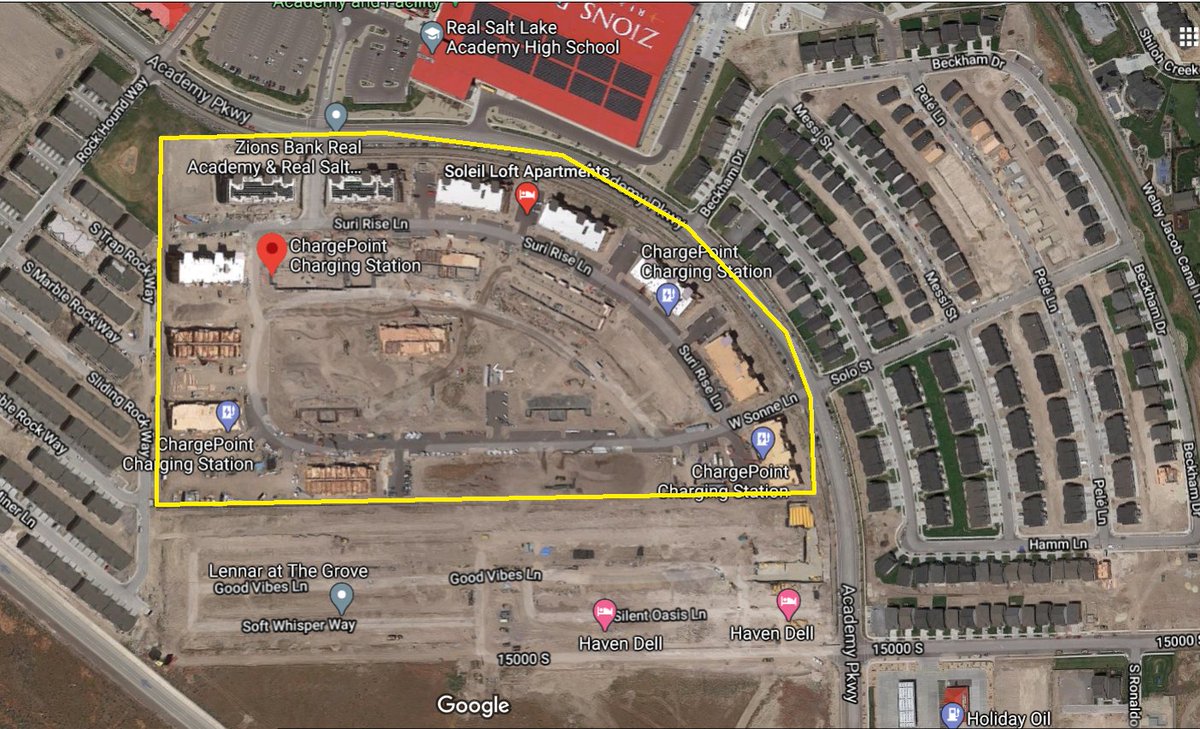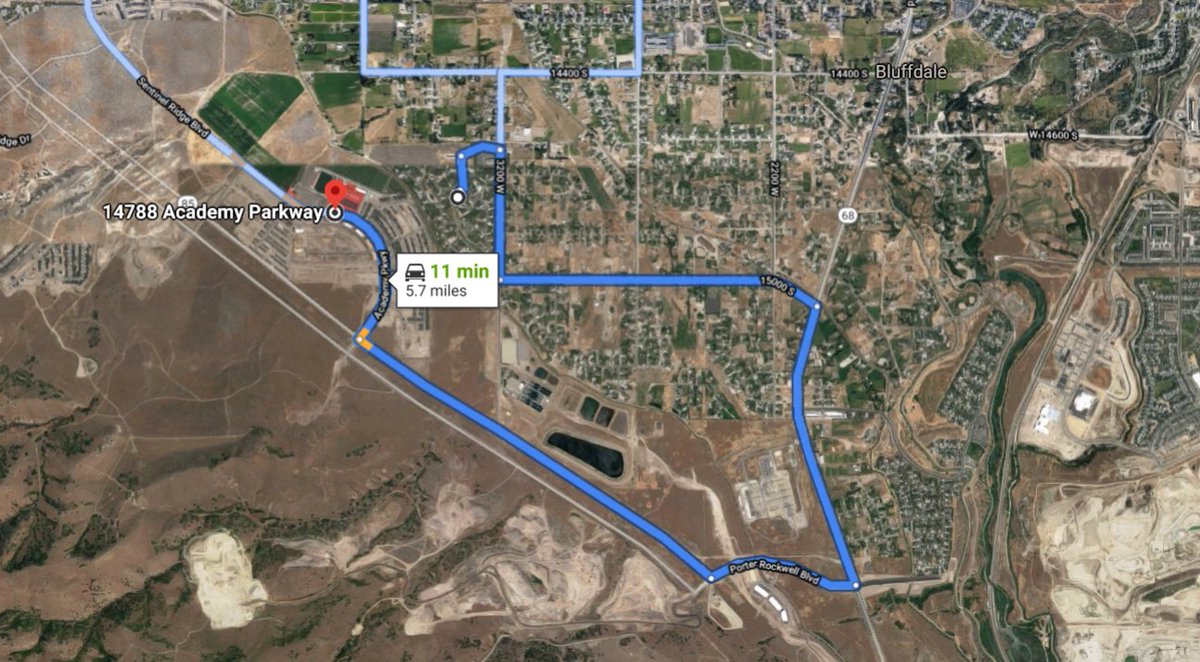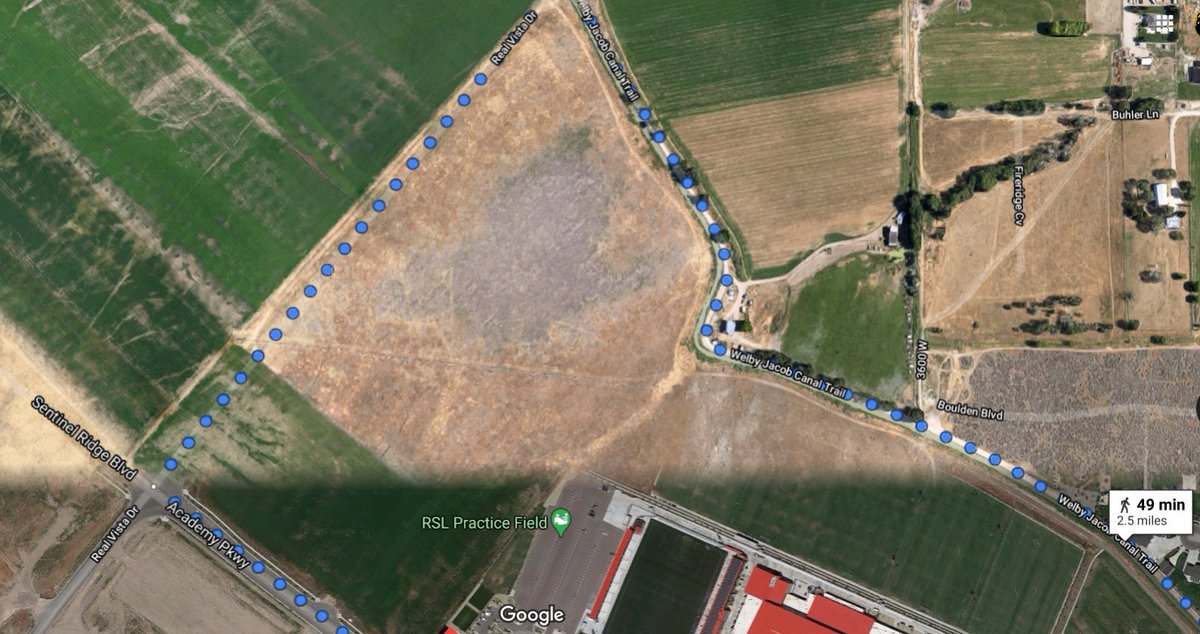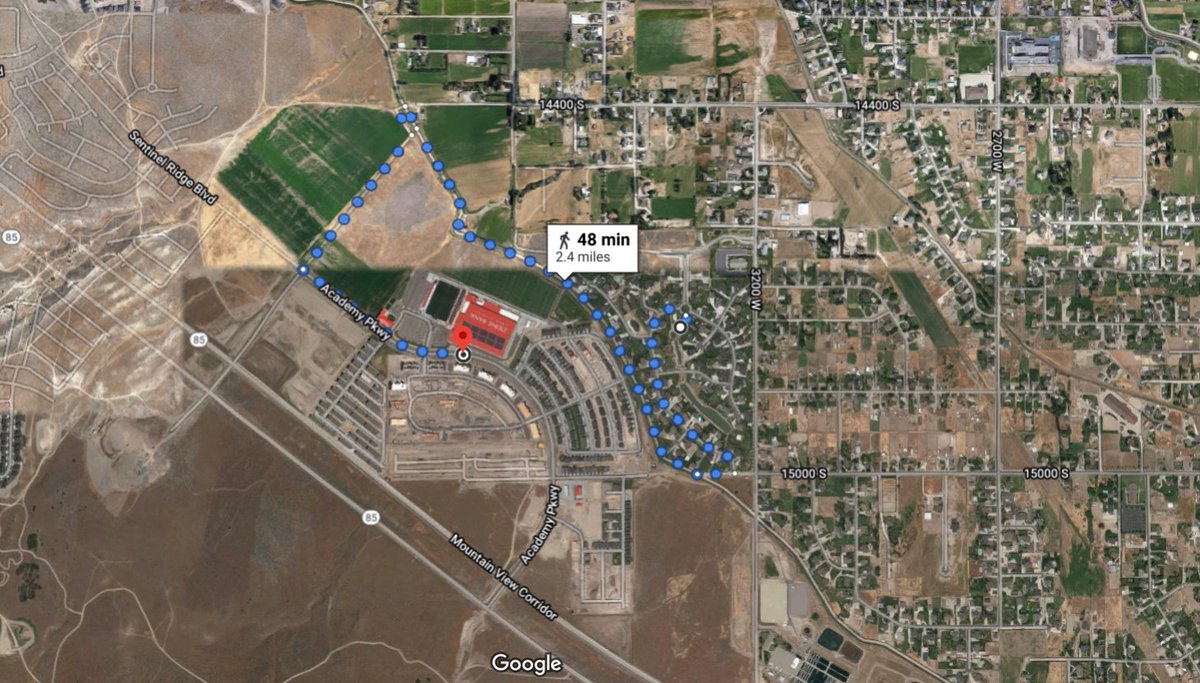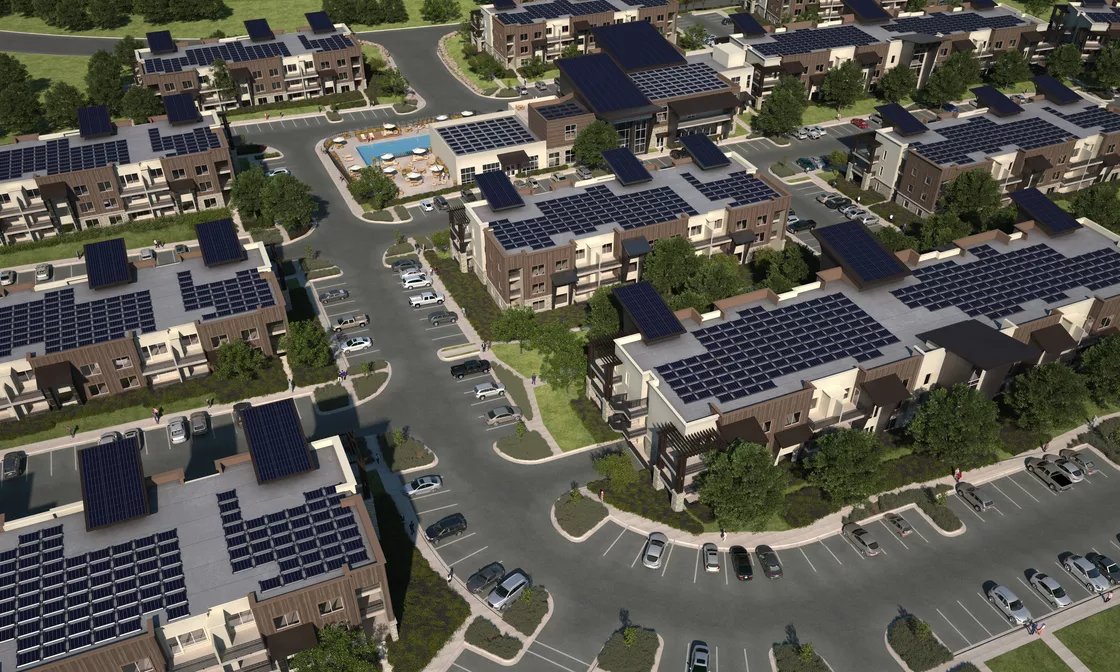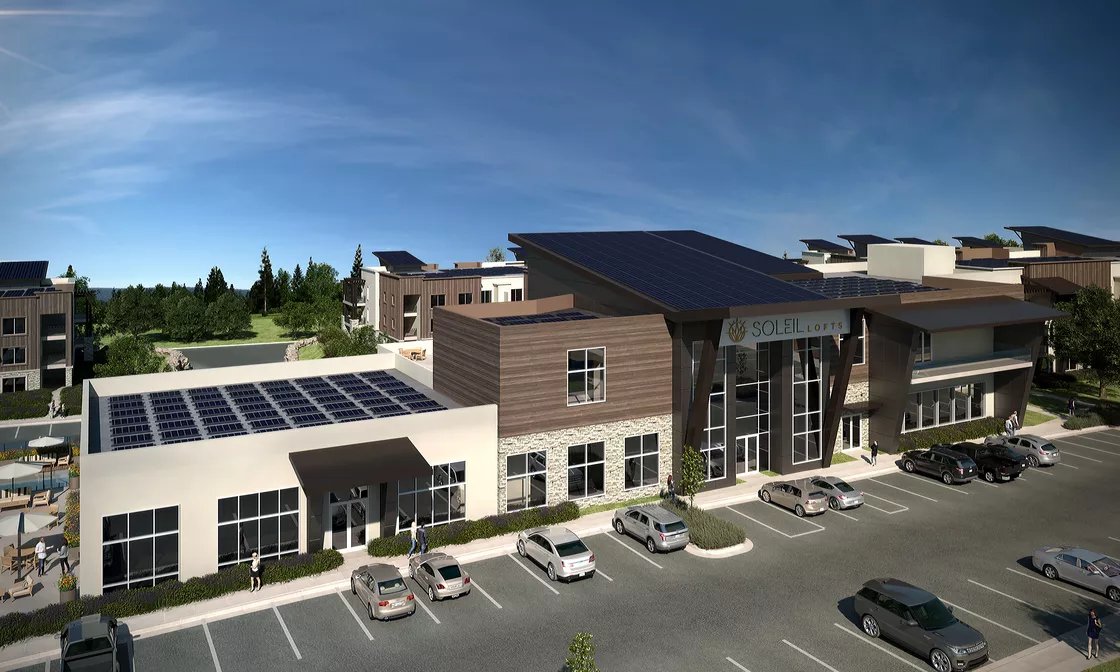1/ Let's talk about what we mean by sustainable development.
The Soleil Lofts in Herriman, UT (greater SLC) offer a perfect example of why a narrow definition that looks only at energy consumption is insufficient.
We must assess transportation and land use for a full picture.
The Soleil Lofts in Herriman, UT (greater SLC) offer a perfect example of why a narrow definition that looks only at energy consumption is insufficient.
We must assess transportation and land use for a full picture.
2/ The sleek Soleil Lofts will be all electric with lots of distributed solar energy generation and local battery storage. Very cool.
In total, the 600-unit development will boast 5.2MW of solar and 12.6 MWh of energy storage.
In total, the 600-unit development will boast 5.2MW of solar and 12.6 MWh of energy storage.
3/ Building electrification & distributed energy are *essential* to meeting our climate goals. Soleil should be applauded for solar + battery design, which should become standard practice everywhere.
Yet, the transportation & land use context of Soleil is deeply problematic.
Yet, the transportation & land use context of Soleil is deeply problematic.
4/ The problem is that Soleil is a disconnected CAR ISLAND with two entry/exit points that both connect to Academy Pkwy but not the surrounding houses.
Whether you are going for a gallon of milk or cross-country trip, you must use Academy Pkwy.
Whether you are going for a gallon of milk or cross-country trip, you must use Academy Pkwy.
5/ This forces residents to use a car for *every trip* and every need. If, for instance, you wanted to head to the nearby neighborhood Boulder Falls Park, this would be a 5.7 MILE drive or a 2.4 MILE walk...on streets totally hostile to walking.
6/ The dominance of vehicles in Soleil's design is apparent from the rendering, which shows that a high percentage of space is dedicated to car storage/ROW.
7/ The City of Herriman's land use plan proudly promotes a transition away from large-lot residential plots to a community with livable bike/ped development with a greater diversity of housing types. Soleil fails that test.
8/ This land use should not be considered sustainable - even with the modest density and electrification. We must look beyond energy use to consider how people move and accomplish life's daily needs.
A car island is not human scaled or sustainable.
A car island is not human scaled or sustainable.
9/ For too long, we have focused on building height when thinking about "human-scale" development. Yet, this is the wrong reference point. Human-scale development is about distance, not building height.
10/ If you have to use a 2-ton vehicle [whether internal combustion or battery electric] for every need, it's not human-scaled and not sustainable. And even EV cars have a ton of embodied energy/emissions.
11/ Cars must become a peripheral part of our daily mobility (again, regardless of powertrain) - something we use to accomplish the small subset of trips for which cars are uniquely suited. This can only happen with a fundamental shift in our transportation & land use systems.

 Read on Twitter
Read on Twitter